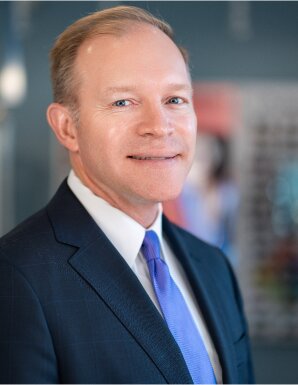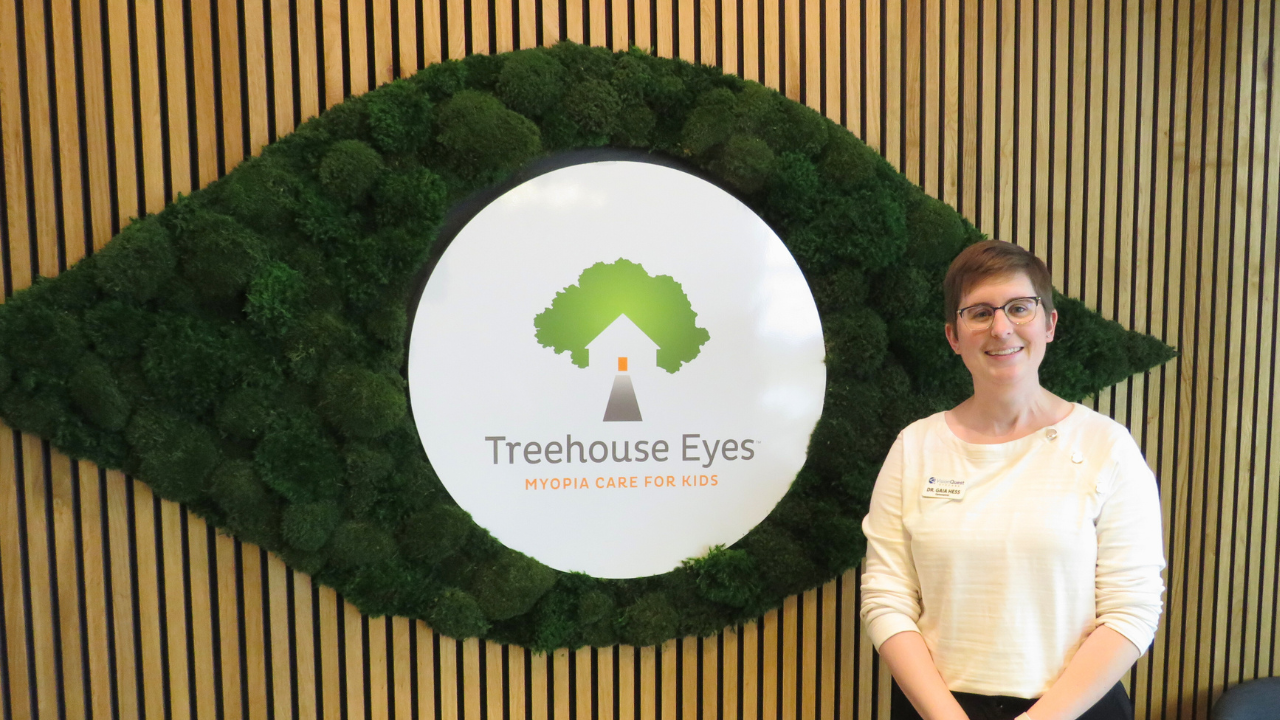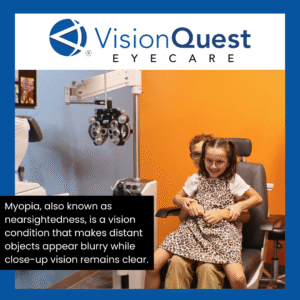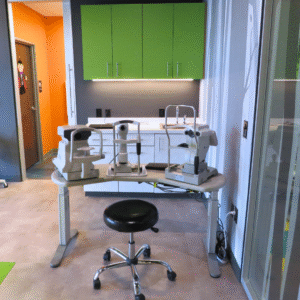At VisionQuest Eyecare, many of the parents we see in our Greenwood and Fishers offices come in with the same question: “What exactly is myopia, and why is it becoming so common in kids?” With myopia cases steadily rising in children, it’s more important than ever to understand what it is, how it affects your child’s health, and what you can do to protect their vision.
Defining Myopia
Myopia, also known as nearsightedness, is a vision condition that makes distant objects appear blurry while close-up vision remains clear. It occurs when the eye grows too long from front to back, causing light to focus in front of the retina instead of directly on it.
While blurry distance vision is the most noticeable symptom, the real concern lies in what’s happening inside the eye. As the eyeball continues to elongate, myopia typically gets worse—especially if it begins in childhood. Without intervention, many children find themselves needing stronger glasses each year.
At VisionQuest Eyecare, we use advanced, non-invasive technology to measure a child’s axial length—the distance from the cornea to the retina. This allows us to monitor the progression of myopia more precisely and intervene at the right time.
Why Myopia Deserves Attention
While it may seem like a minor inconvenience that’s easily corrected with glasses, myopia is much more than just a refractive issue. Higher levels of myopia significantly increase the risk for serious eye diseases later in life. These include:
- Retinal detachment, a potentially sight-threatening condition
- Glaucoma, caused by increased eye pressure and damage to the optic nerve
- Myopic macular degeneration, a complication where the retina deteriorates due to the stretching of the eye
- Early-onset cataracts, requiring surgery at a younger age than usual
The risk for these conditions increases with the degree of myopia, making early intervention critical. But beyond health risks, untreated or worsening myopia can also affect your child’s daily experiences—from struggling to see the board at school to missing out on sports or outdoor activities.
In fact, research shows that children with untreated vision problems may face challenges in academic performance, social interactions, and even self-esteem. One study published in the Journal of Optometry and Vision Science found that visual discomfort can negatively impact a child’s mental well-being and confidence.
What Contributes to Myopia?
There isn’t a single cause of myopia, but several factors influence its development and progression. Genetics play a strong role—if one or both parents are nearsighted, their child is more likely to develop it. Environmental factors are just as important.
Kids today spend more time indoors, glued to screens or books, and less time outdoors. This combination of prolonged near work and limited natural light exposure has been closely linked to increasing myopia rates. The earlier it begins, the more time the condition has to progress.
What Parents Can Do
The good news is that there are simple, effective steps parents can take to help slow down their child’s myopia—and protect their eye health long term. These strategies are most effective when started early and followed consistently:
- Encourage daily outdoor activity: Studies show that children who spend at least two hours outside each day are less likely to develop myopia. Exposure to natural light appears to slow the elongation of the eye.
- Manage screen time and near work: Whether it’s reading or using a tablet, remind your child to take breaks using the 20-20-20 rule: every 20 minutes, look at something 20 feet away for 20 seconds.
Perhaps most importantly, schedule regular comprehensive eye exams. Many vision changes in children go unnoticed because kids often don’t realize their eyesight is declining. At VisionQuest Eyecare, we recommend annual eye exams for all children, even if they haven’t reported vision problems.
Myopia Management at VisionQuest Eyecare
If your child is diagnosed with myopia, we offer a range of evidence-based treatments to help slow its progression. Through our partnership with Treehouse Eyes®, we provide advanced options like orthokeratology (Ortho-K) lenses, low-dose atropine eye drops, and soft multifocal contact lenses—all tailored to your child’s specific needs.
These treatments don’t just correct vision—they help prevent the worsening of the condition, reducing the risk of future complications. Our experienced eye doctors will work closely with your family to develop a personalized plan and monitor progress every step of the way.
Don’t Wait—Act Early
The earlier myopia is detected and managed, the better the outcome for your child’s long-term vision. If you’ve noticed your child squinting, sitting close to screens, or struggling in school, it might be time for a comprehensive eye exam.
At VisionQuest Eyecare, we’re here to guide you through every aspect of your child’s vision journey—from diagnosis to lifelong care. Our Greenwood and Fishers offices provide a welcoming environment, expert care, and the latest in pediatric eye health solutions.
Schedule your child’s myopia consultation today and give them the gift of clearer vision and a healthier future.

Dr. Chris Browning is a Greenwood native, who has been serving the community through glaucoma care and myopia management. He studied at Indiana University Bloomington and the Indiana University School of Optometry. As he has severe nearsightedness himself, Dr. Browning is passionate about helping others to achieve excellent vision.



